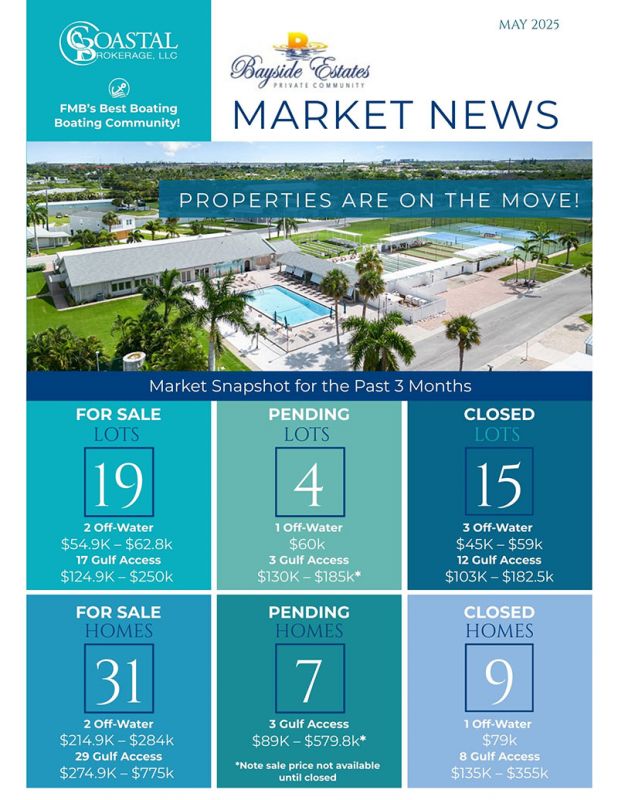🌴 Your Palmetto Palms Market Trends is Here! 🏡✨ >>> from Coastal Brokerage Real Estate
May 16, 2025
Posted in no categories.
no comments yet
🌴 Your Bayside Market Trends is Here! 🏡✨ >>> from Coastal Brokerage Real Estate.
May 8, 2025
Posted in Bayside Market Updates
Have you ever wondered if you can finance a Manufactured Home?
March 7, 2025
Here’s a great article showing how and the differences between manufactured, mobile and modular homes.
Source: The Bednar Team, Crosscountry Mortgage
CONTINUE READING ARTICLE
Posted in no categories.
Promising News from FEMA Study!
March 7, 2025
FEMA study of IAN high water marks and probability of water reaching those levels. Many areas of Lee and Collier are 150-250 year high water marks!
That means the likely probability...CONTINUE READING ARTICLE
Posted in no categories.
Preparing your home for a profitable sale
March 7, 2025
It requires time, effort and strategic planning
By: Rollingout.com MAR 20, 2024
When it comes to selling your home, preparation is key. Not only does it influence the...CONTINUE READING ARTICLE
Posted in no categories.





.jpg)
